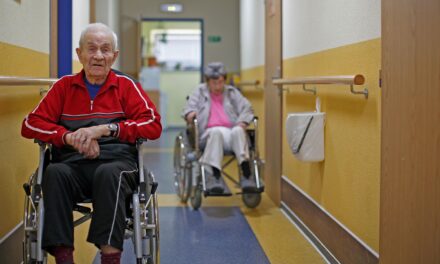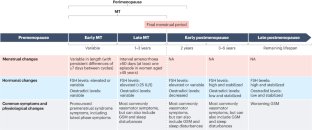
Although screenings for breast cancer can detect abnormalities in the breast, some people discover breast changes on their own during a self-exam—or simply by accident when they brush an arm across their chest, for example, or while soaping up in the shower. Many of these abnormalities are in the form of a lump or mass beneath the skin, which doctors refer to as a breast lesion.
“A breast lesion is also called a breast mass, which is a growth or lump within the breast tissue that can appear as a single lump or manifest as a cluster of lumps,” says Amy Bremner, M.D., a breast surgical oncologist and medical director of breast surgical oncology at MemorialCare Saddleback Medical Center in Laguna Hills, CA. “They can be either benign or malignant, which is why it’s important to get them checked if you find them on your own, so you can get testing done to determine if a lesion is cancerous.”
We asked our experts to explain the types of breast lesions, how they’re evaluated, and when they require treatment.
What Are Breast Lesions?
Both women and men have breast tissue, and there are different types of tissue within the breast, according to the National Cancer Institute (NCI). These include:
-
Fatty breast tissue
-
Fibrous connective tissue, which supports muscles
-
Glandular tissue, found mainly in women since it includes lobules that make milk and ducts that carry milk to the nipple
For women, breast tissue can change over a lifetime due to factors like menstruation, pregnancy, menopause, and hormone use. As these shifts occur, breast tissue may thicken in some spots and create a lump or mass (lesion). This can happen anywhere in the breast, the NCI notes—for example, under your arm, beneath your nipple, or on the underside of the breast. Most lesions are not breast cancer, but they should be checked anyway.
Other breast changes you might notice are nipple discharge—which the NCI reports can be caused by birth control pills, medicine, and infections as well as cancer—and skin changes like redness, brown spots, dry areas, pimples, or dimpling. Like breast lumps, skin changes in the breast can be caused by various things, of which cancer is only one.
Is It Cancer?
Are Breast Lesions Cancerous?
Although finding a lump in your breast can make your stomach drop with anxiety, the majority of lesions are noncancerous, according to the American Cancer Society. These lumps are very common, the organization adds, and most women have them but many are so small that you don’t feel them.
Some benign lesions may be accompanied by symptoms that mimic cancer, such as pain or nipple discharge, the American Cancer Society adds. They may also resemble cancerous lesions on a mammogram, which is why further testing like a biopsy is necessary to confirm what’s going on.
Although benign lesions may change shape over time, it’s helpful to know that such breast masses do not turn into cancer, says Dr. Bremner. Of course, not all breast lesions are benign. There are those that do have malignant cells, which will be detected through a biopsy.
Types of Breast Lesions
There can be several types of breast lesions, says Constance Chen, M.D., a plastic surgeon and breast reconstruction specialist in private practice in New York City. Here are the most common kinds of noncancerous lesions:
-
Cyst: A fluid-filled mass or sac-like pocket of tissue. The NCI notes that cysts may be painful just before a menstrual period and are more likely in premenopausal women and those taking menopausal hormone therapy.
-
Fat necrosis of the breast: This is a condition that causes round, firm, and usually painless lumps. These lesions may develop after an injury to the breast, including surgery or radiation therapy.
-
Fibroadenoma: These are benign breast tumors that often feel like hard, round lumps that move easily and are common in women under age 30. These lesions may get larger when estrogen levels increase, such as during pregnancy or hormone replacement therapy.
-
Fibrocystic breast changes: This is a condition that comes with multiple symptoms including cysts or lumps, says Dr. Bremner. You may also experience breast swelling, sensitive nipples, itching, breast discomfort, and nipple discharge.
-
Granular cell tumor: Also called Abrikossoff tumor, this is a rare type of soft tumor that causes a firm lump and can occur anywhere in the body, in addition to the breasts.
-
Hematoma: Usually caused by a broken blood vessel as a result of an injury, this is a pool of clotted blood under the skin of the breast that may cause a lesion and swelling, similar to a bruise.
-
Lipoma: This is a benign tumor made of fat cells and usually results in a painless, single, soft lesion.
In terms of cancerous lesions, this can include multiple types of invasive and noninvasive cancers, Dr. Bremner says. The most common is invasive ductal carcinoma—which starts in the milk ducts, she adds.
“Because there are many possibilities, it’s essential to be seen by a physician for a physical examination, imaging, and biopsy,” says Dr. Chen.
Diagnosing Breast Lesions
The first step in assessing a breast lesion will be a mammogram, followed by an ultrasound, says Dr. Bremner. These can provide images of the size and density of the breast lesion.
“From there, the diagnosis of a benign or malignant breast mass is confirmed by breast biopsy,” she adds. The American Cancer Society notes that there are different types of breast biopsies:
-
Core needle biopsy, which is used most often when breast cancer is suspected
-
Fine needle aspiration, for drawing a small amount of tissue or fluid from an area
-
Surgical biopsy. This procedure is used less often but may come into play if you are having the mass removed right off the bat (for example, it’s causing discomfort and you want it taken out regardless of whether it turns out to be cancerous or not).
Regardless of which type of biopsy you get, the samples will be sent to a pathologist who will determine whether your breast lesion contains malignant cells.
Treatment of Breast Lesions
Once the nature of your breast lesion is determined and you have a diagnosis, treatment will be based on what has caused the lesion.
For example, if it’s scar tissue, then therapeutic massage can help break it up, says Dr. Chen. For benign lesions, she says no treatment may be necessary unless it’s bothering you, but it’s also important to get the lesion checked on an annual basis—or a shorter timeframe, based on your doctor’s recommendation—to see if there are any changes in its size or if any additional lesions are developing.
If a lesion is benign and is causing pain, surgical removal may be recommended, adds Dr. Bremner. For a cyst, aspiration can be performed that will drain the fluid and shrink its size, which usually resolves the pain and discomfort.
If the lesion turns out to be cancerous, treatment will involve a multidisciplinary approach that depends on what type of breast cancer you have, whether it’s spread outside the breast, and other factors.
See a Doctor
When to See a Doctor
Although most breast lesions are noncancerous and do not turn into cancer if untreated, it’s crucial to get lumps checked if you find them, says Dr. Bremner. Early detection and diagnosis can be essential for treating breast cancer more effectively, if that’s what your lesion turns out to be. Plus, seeing your doctor and getting checked can simply give you peace of mind if your breast lesion is benign.
© 2023 HealthCentral LLC. All rights reserved.




